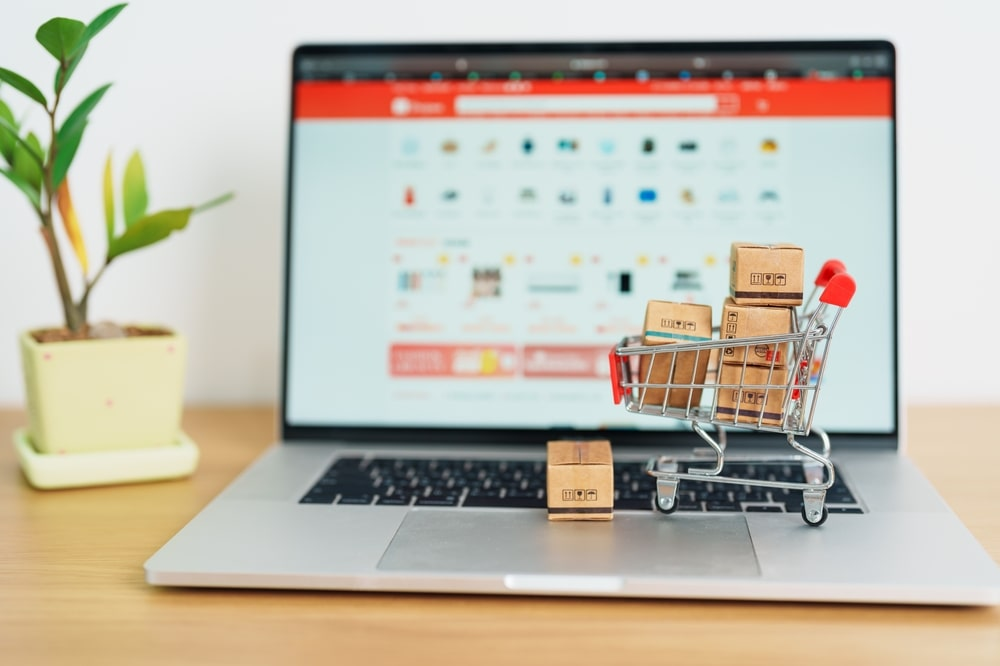Have you ever dreamed of starting your own online venture yet felt overwhelmed by inventory management logistics? Dropshipping may offer a solution worth considering!
This comprehensive guide explores:
1. What exactly is dropshipping?
2. How does the dropshipping model function in practice?
3. Critical steps for successfully launching a dropship operation.
Key Takeaways:
– Dropshipping allows entrepreneurs to sell products online without themselves holding stock. When an order is placed, the retailer forwards details to their supplier – who then ships the item directly to the customer.
– Choosing products with demand, selecting reliable suppliers, effective marketing, competitive pricing, and superb customer service are vital for success.
– While dropshipping provides advantages, maintaining your inventory provides benefits too. Services like Stallion can help reduce transportation costs.

What is the Nature of Dropshipping?
Dropshipping is a fulfillment strategy where the seller doesn’t retain products on-site. Instead, partnerships are formed with suppliers to handle warehousing, packaging and delivery in the seller’s stead.
How it Operates:
1. Listings are created showcasing products on the retailer’s online storefront.
2. An order is placed by a customer through the storefront.
3. Order details are forwarded by the retailer to their dropshipping supplier.
4. The supplier then ships the product directly to the customer.
5. Profit is the difference between the retailer’s market price and their procurement costs.
Is Dropshipping Legal in Canada?
Yes, dropshipping is a valid business model within Canadian borders. However, entrepreneurs must abide by all applicable regulations regarding products, taxation obligations and more. Ensure items are legally sellable and that appropriate duties are collected and remitted.
Challenges of Dropshipping:
Challenges of the Dropshipping Business Model
Low Barrier to Entry:
• Requires less upfront investment compared to traditional eCommerce.
• High competition due to low entry costs.
Time Commitment:
• Success depends on marketing, customer service, and brand building.
• Ongoing effort is required to maintain and grow the business.
Competition:
• The market is saturated, making it crucial to stand out with a unique selling proposition, excellent customer service, and effective marketing.
Profit Margins:
• Typically lower due to additional layers in the distribution chain.
• Careful planning and pricing strategies are necessary to ensure profitability.
Limited Control:
• Dependence on suppliers for product quality and shipping times.
• Reliable suppliers and clear communication are essential for customer satisfaction.

Starting Your Dropshipping Business
- Find Your Niche:
• Choose a product category with good market demand.
• Conduct market research using tools like Google Trends.
- Source Reliable Suppliers:
• Select suppliers that align with your niche and target audience.
• Research their reputation and shipping times.
- Build Your Online Store:
• Use eCommerce platforms like Shopify.
• Consider pricing, features, and ease of use.
- Brand and Market Your Store:
• Develop a strong brand identity and marketing strategy.
• Utilize social media, SEO, and PPC advertising.
- Process Orders and Provide Customer Service:
• Forward orders to your supplier for fulfillment.
• Focus on excellent customer service to build trust and loyalty.
Is Dropshipping Worth It for Beginners?
Advantages:
• Lower startup costs compared to traditional eCommerce.
• Simplified inventory management.
• Opportunity to learn eCommerce fundamentals.
Considerations:
• Be prepared for competition and tight margins.
• Focus on building a sustainable business model.
How Profitable Is Dropshipping?
Factors Affecting Profitability:
• Product selection and market demand.
• Supplier costs and pricing strategies.
• Marketing and advertising expenses.
• Operational costs, including platform fees.
Profit Margin Example:
• Selling price: $25
• Supplier cost: $10
• Advertising cost: $5
• Profit per sale: $10
Pros:
• Access to a large customer base.
• Fulfillment by Amazon (FBA) offers faster shipping times.
Cons:
• Stricter guidelines and increased competition.
• Lower margins due to Amazon seller fees.
Best Shopify Plan for Dropshipping
• Cost: $29/month
• Features: Essential tools, unlimited product listings.
Shopify:
• Cost: $79/month
• Additional features: Abandoned cart recovery, discount codes.
Advanced Shopify:
• Cost: $299/month
• Best for high-volume businesses, lowest transaction fees, advanced reporting tools.
Why Start Your Business from Scratch?
Advantages:
• Higher profit potential with direct sourcing.
• Greater brand identity and control over inventory and quality.
• Long-term growth potential and sense of ownership.
How Stallion Can Help Your Online Store
Benefits:
• Discounted shipping rates, especially for USPS postage.
• Streamlined shipping process with integrations to various eCommerce platforms.
• Multiple carrier options for flexibility and cost-effectiveness.
• Focus on Canadian sellers for localized support.
To summarize, dropshipping presents a low-investment avenue to launch an online store, but accomplishment necessitates dedication and ongoing effort. Conversely, managing one’s own inventory can yield higher profit potential and stronger brand governance. Services like Stallion support businesses through affordable shipping solutions.

